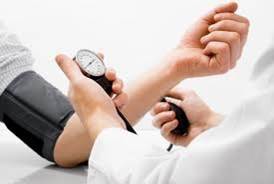 The last couple of weeks have been spent moving from a home with 20 years accumulation of “stuff” to a new home. While it has been exciting, it has also been exhausting. I realized a few days ago that I was staying up later than usual to unpack and rearrange items and then not falling asleep when I did go to bed. My mind kept racing thinking about everything I needed – or wanted – to do the next day. The result was a tired, somewhat grumpy version of me!
The last couple of weeks have been spent moving from a home with 20 years accumulation of “stuff” to a new home. While it has been exciting, it has also been exhausting. I realized a few days ago that I was staying up later than usual to unpack and rearrange items and then not falling asleep when I did go to bed. My mind kept racing thinking about everything I needed – or wanted – to do the next day. The result was a tired, somewhat grumpy version of me!
Eating well and being physically active are two basic activities that we think of when we discuss being healthy. Something that is often overlooked is the importance that a good night’s sleep plays in our overall health. Research has shown that insufficient sleep increases the risk of disorders, such as high blood pressure, diabetes, obesity, stroke and depression. It’s also associated with cognitive decline and Alzheimer’s disease.
Most of us have heard that all adults need 7 – 8 hours of sleep each night. That generally holds true but it is important to remember that the quality of your sleep is just as, if not more, important than the quantity! You should feel rested when you wake up in the morning. It is important to listen to your body’s biological clock which is set by the hours of daylight where you live. This should make it easier for you to stay awake during the day and sleep at night.
There will be times that you find it more difficult to fall asleep than others. If you are under stress, experiencing pain from an injury or illness, consuming excess caffeine or alcohol, you may find that falling and staying asleep are difficult. In that case, recognizing the reasons and making some adjustments to your daytime activities should help you sleep more soundly.
Some suggestions for improving your sleep:
- Create a comfortable, calming sleep environment. This could include room darkening window coverings.
- Avoid electronic devices in your bedroom – computers, tablets, games, etc. should be shut down before bedtime.
- Establish a routine that you follow each evening to help you fall asleep and stay asleep.
- Have a consistent bed time – even on the weekends.
There are small changes you can make to your daytime activities that may lead to better sleep.
- Try to spend some time outdoors every day.
- Exercise earlier in the day instead of later in the evening.
- If you nap, limit yourself to 20 minutes or less.
- Avoid both caffeine and alcohol close to your chosen bed time. Do some experimenting to find the cut off time for you – everyone will be a little different!
- If you smoke, quit! Nicotine in cigarettes can make sleep more difficult.
If you continue to have sleep problems, it might be wise to visit your doctor to be sure you don’t have a more serious sleep disorder.
While sleep is not a guaranteed cure all for you, it doesn’t hurt anyone to establish sleep habits that help you consistently get a good night’s sleep!
WRITTEN BY: Marilyn Rabe, Family and Consumer Sciences Educator, Ohio State University Extension, Franklin County, rabe.9@osu.edu
REVIEWED BY: Michelle Treber, Family and Consumer Sciences Educator, Ohio State University Extension, Pickaway County, treber.1@osu.edu
Sources:
http://www.apa.org/monitor/2017/10/cover-sleep.aspx
https://www.health.harvard.edu/staying-healthy/ask-the-doctor-right-amount-of-sleep












